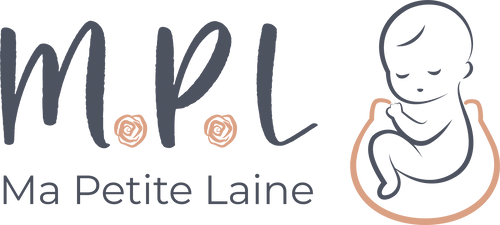The solution for the transition after swaddling: the cocoon is in a soft swaddle
Tips for a successful transition to swaddling: a practical guide for parents
Swaddling is an age-old technique used to soothe newborn babies and give them a feeling of security similar to that of the womb. However, at some point, your baby will have to make the transition to more freedom of movement. This can be a tricky stage, but with the right approach, it can be smooth and stress-free for your little one. Here's a simple tip for making this transition a success.
Why and when should swaddling be stopped?
Swaddling is very effective during the first few weeks of a baby's life, generally up to the age of 2 to 4 months. This depends on your baby's development. The aim is to give him a feeling of comfort and security, while helping him to sleep better. However, when your baby starts to roll over or has more control over his arms and legs, it's time to think about the transition.
Once baby is 1 or 2 months old, the question may arise of stopping the strict swaddling. And when Baby can roll onto his tummy or starts rubbing against the edges of his wrap, it's best to stop the traditional swaddling. It's important to give him more freedom so that he can move around as he pleases without risk. What's more, from 3-4 months onwards, swaddling may also become less effective, as baby may develop a preference for freedom of movement.
Tips for a successful transition: the Ma Petite Laine birth cocoon
Instead of abruptly removing the swaddle, the trick is to make a transition with a gentle swaddle..
1. The Cocoon's gentle swaddling: arms free

2. Each baby has its own rhythm and different needs
The 2-9 months size of Ma Petite Laine cocoons are specially designed for the transitional needs of babies swaddled in the traditional way.
Some babies will need this gentle swaddle until they are 12 months or even 18 months old, and others will switch to a sleeping bag as early as 5 months!
3. Improving your bedtime routine
Alongside this physical transition, it is important to reinforce the bedtime routine to help your baby feel secure. A calm environment, gentle rocking or caressing, even white noise, can help maintain a sense of security. Consider rocking baby in the cocoon before bedtime.
4. Allow time and patience
Every baby is unique, and some can adapt to this transition quickly, while others may need more time. Don't be in too much of a hurry: the first few nights without swaddling may be a little more difficult, with frequent waking or crying, but these discomforts will generally disappear after a few days. So it's essential to be patient and give your baby time to adapt.
Signs that your baby is ready
There is no strict rule about the exact age at which a baby should stop swaddling. However, there are certain signs that may indicate that your baby is ready for the transition:
From 1 or 2 months, some babies will prefer a soft swaddle, which will also allow more flexion in the pelvis and make digestion easier, thus reducing colic.
He starts to turn onto his tummy: This is often a sign that it's time to stop swaddling, as he could end up in an uncomfortable or even dangerous position with his arms trapped.
He tries to rub against the swaddle: If you notice that he tries to get out of the swaddle or seems restless at night, this could mean that he prefers more freedom.
He's starting to have better control of his arms and legs: From 3-4 months onwards, babies develop more coordination. This allows them to move around more freely, making swaddling less necessary.
Conclusion
The transition from swaddling can be a tricky process, but with patience and a gradual approach, your baby will find it easy to adapt to his new freedom. The secret lies in gradually reducing the swaddling while maintaining a soothing bedtime routine. Remember that every baby is unique, and it's important to listen to him and respect his needs throughout this stage. The most important thing is to provide a secure environment that encourages baby's development and comfort.
Discover all our cocoonsfor a gentle swaddling transition.
Tagged in Sommeil bébé 100% merino wool Emily Pikler emmaillotage
